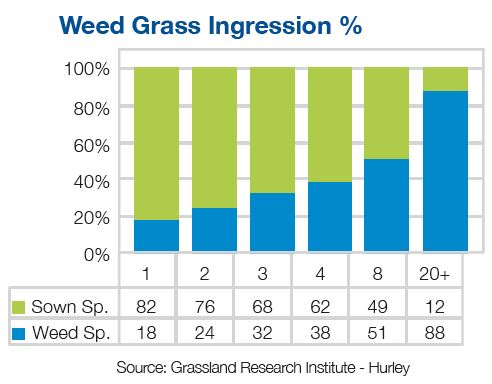What are the benefits of reseeding an existing ley?
-

- 11 Apr 2025
- 0 Comments

Reseeding an existing ley can lead to a significant return on investment. Within several years ‘weed grasses’ will ingress into a sward – particularly if the field has experienced poaching or after a hard winter. These ‘weed grasses’ have poor quality characteristics compared to ryegrass varieties from the Recommended List. These include poor digestibility and a poorer response to fertiliser, as well as not converting to meat and milk as efficiently as ryegrass.
Top benefits of reseeding:
- Improved yields
- Higher DM intakes
- Enhanced disease resistance
- Earlier turnout of stock
- Increased stocking rate
- Increased palatability and digestibility
- Improved grazing and silage quality
- Higher response to nitrogen (N) fertiliser




With the increase in volatility of fertiliser prices, it is important that a grassland nutrient programme is cost-effective.
It is essential that the sward comprises of grass species that respond to fertiliser to maximise on-farm profitability. After all, there is little point in applying fertiliser to a sward, which mainly comprises of weed grasses. This is both a waste of money and resource.
The graph (please see left) clearly shows the variance between perennials’ efficiency and the efficiency of common weed grasses when
nitrogen fertiliser is applied.
Spring reseeds are effective, especially when soil temperatures have consistently reached 8–10°C and are rising, typically from late March to early May, location and weather dependant. . For best results, reseed when conditions are moist , and when there’s minimal risk of drought or heavy competition from weeds. Soil should be well-prepared, with a fine, firm seedbed, and pH levels ideally between 6.0 and 6.5. It’s important to correct any compaction or drainage issues before sowing. Light grazing or a stale seedbed approach (where weeds are encouraged to grow and then sprayed off) can help reduce weed burden. After sowing, seeds need good soil-to-seed contact, rolling ensures quick germination. Timely post-emergence weed control and light grazing can help the new ley establish quickly and robustly.









